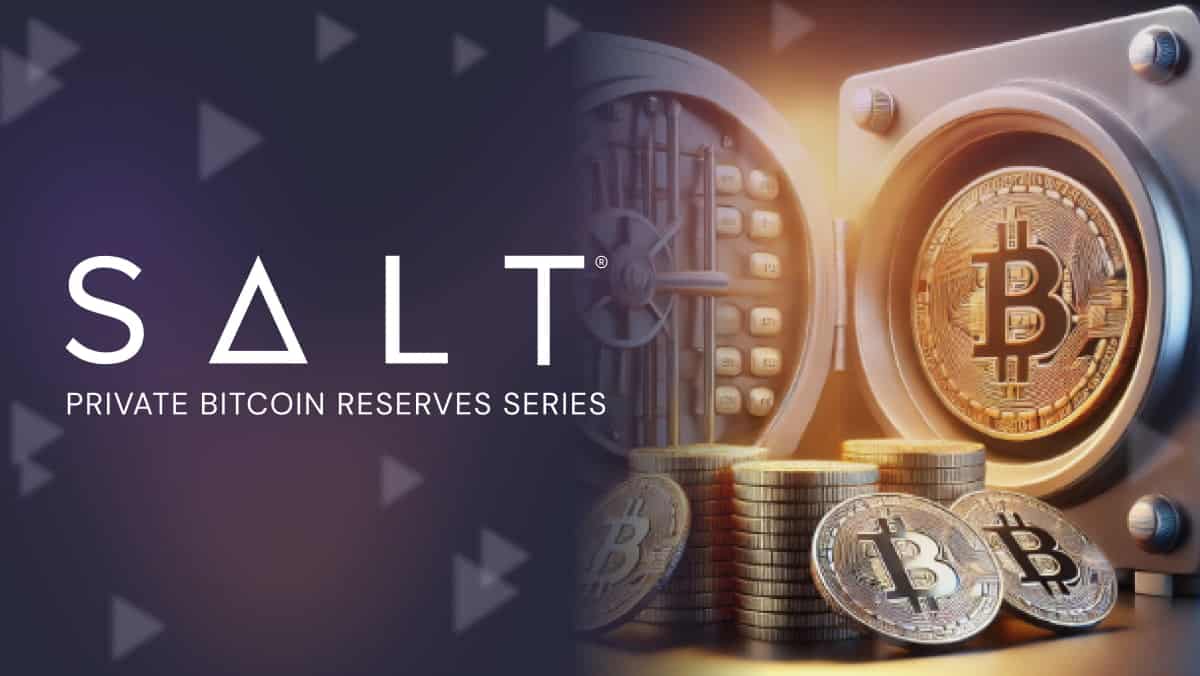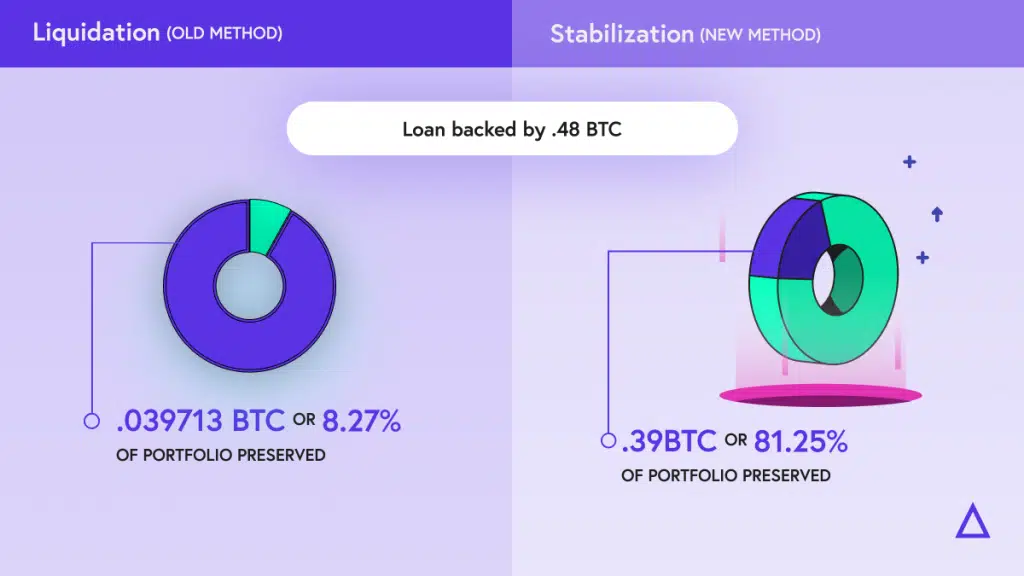Originally published in ABF Journal
Cryptocurrency is a disruptor. Not only has it changed the way we conduct business, but it has changed the way we think. The most obvious manifestation of how cryptocurrency has disrupted our thought patterns is in the way we think about money — about who issues it, how to transact with it, how to put it to work and how to keep it safe. It also has changed the way we think about our government, our right to privacy and our financial freedom. What’s less obvious is how cryptocurrencies are disrupting the way we think about and participate in asset-based lending. The advent of Bitcoin catalyzed the creation of a myriad of cryptocurrencies, many of which became viewed as assets, yet at the time, there was no way for crypto investors to unlock the value of these assets without selling them. This is the problem SALT’s founders set out to solve in 2016 and in doing so successfully, made asset-based lending as we once knew it a thing of the past.
Creating a New Asset Class
As Bitcoin began to experience wider adoption following its release in 2009, it became clear that some investors were purchasing crypto to trade on a daily basis while others were choosing to invest long-term, viewing Bitcoin more as an asset than as a spendable currency. As more investors adopted this long position and began to think of cryptocurrencies as an asset class in their own right, the term “HODL” emerged in 2013 on a bitcoin-talk forum and has since become one of the most commonly used words in the crypto vernacular. This HODL culture has grown significantly over the years and has evolved to where investors are buying, selling and trading these assets not only for themselves but on behalf of others. This activity has taken the form of crypto portfolios and crypto funds, which offer access to this new asset class for individuals and allow them to diversify their portfolios while eliminating some of the overhead of learning how to purchase and safely hold cryptoassets. By providing a way to collateralize cryptoassets to secure a cash or stablecoin loan, SALT provides opportunities for individuals, businesses and capital providers to build and preserve wealth.
How to Lend Cryptoassets
As the first-ever crypto-backed lender, SALT has developed the technology and processes required to successfully lend against cryptoassets, giving borrowers a way to unlock the value of these assets without selling them. Take Bitcoin for example. It’s one of many cryptoassets we accept as collateral on our platform, yet it makes up more than 80% of the collateral securing our loan book.
What makes Bitcoin a strong form of collateral? The answer lies in Bitcoin’s combined characteristics. Like gold, Bitcoin is scarce, fungible, divisible, transferable and durable. It is also extremely liquid given it is traded on global exchanges every day. Additionally, as a decentralized asset, Bitcoin is highly secure. All of these properties make Bitcoin both a viable asset and a highly efficient form of collateral that has piqued the interest of some of the largest financial institutions in the world.
One thing to note is Bitcoin’s volatile nature, which can pose challenges specifically for the ABL market. However, SALT’s risk management technology effectively manages this volatility. Our technology includes real-time loan-to-value (LTV) monitoring, margin call and liquidation triggers, real-time notifications and the safekeeping of assets through institutional grade custody solutions. For example, our loan-to-value (LTV) monitoring system tracks the prices of assets 24 hours a day, 365 days a year, providing borrowers with the ability to monitor the health of their loan in real-time. If, during periods of heightened volatility, a borrower’s collateral declines in value and their LTV breaches our margin call threshold, we protect the borrower by issuing a margin call that prompts them to take action to restore the health of their loan. Actions borrowers may take include paying down principal or depositing additional collateral to recalibrate their LTV to an appropriate level (70%). If no action is taken and asset prices continue to decline, SALT has the ability and the right to liquidate collateral assets to preserve lender capital. The overcollateralized nature of our loans combined with our risk management technology and ability to liquidate assets enables us to protect the lender, and as a result, we’ve experienced zero losses of principal to date.
Choosing a Crypto-Backed Lender
SALT’s business model is attractive to crypto investors (e.g. traders and asset managers) and businesses (e.g. mining operations and exchanges) for a few reasons. First, we provide access to liquidity, offering loans ranging from $5,000 to the millions. Typical use cases include businesses seeking working capital to fund operational costs and large capital expenditures, or investors seeking leverage, diversification or risk management. Second, since our model is asset-based and requires overcollateralization, we do not rely on a borrower’s credit profile and can fund loans within 24 to 48 hours, assuming the borrower meets our strict AML/KYC requirements. Third, customers know their assets are safely and securely held with institutional-grade custody providers for the duration of their loan. Fourth, our loan process is straightforward and customizable. We allow borrowers to lend against a single cryptoasset or a portfolio of cryptoassets and offer flexible loan terms, including durations ranging from three to 12 months, LTVs up to 60% for individual loans or up to 70% for business loans, and competitive interest rates ranging from 5% to 12% depending on the borrower’s jurisdiction, loan amount and LTV. While we are no longer the only crypto-backed lender in the world, we are one of the few that incorporate a human element into our business model. Unlike completely automated lenders, SALT offers both phone and online support, and assigns each customer a loan support specialist at the time of loan origination. These human touches positively impact a borrower’s experience with the platform; they know that by choosing SALT, they will always have the option to speak with someone about their financial needs.
The Evolution of the Crypto Market and Tokenization
Since SALT’s founding in 2016, the crypto lending market has grown exponentially. According to a report from Credmark, the crypto lending market reached $8 billion in total lifetime loan originations as of Q4/19 and has since surpassed $10 billion following Q1/20. These numbers not only indicate the growing demand for liquidity among crypto holders but also the growing interest among capital providers to get involved in the crypto market. For example, we’ve witnessed an influx of both crypto native (BitGo Prime and Genesis Capital) and traditional financial institutions (Silvergate) that provide leverage and liquidity vehicles at the institutional level.
Another thing to consider regarding the evolution of the crypto market is that as the world becomes tokenized, the very definition of the term “crypto market” is changing. With the emergence of companies like Paxos and Harbor, we’re beginning to see increased tokenization of real-world assets like gold and real estate. At SALT we already accept Pax Gold (a gold-backed cryptoasset) as collateral on our platform and our vision for the future goes well beyond our current collateral scope.
The Role of Alternative Investments
As crypto becomes more widely accepted, a growing number of people are assessing their own risk profiles and determining the best way for them to participate in the crypto market. For those with lower risk profiles, the market has evolved in recent years to offer individuals or businesses indirect exposure to this new asset class. As previously mentioned, crypto portfolios and crypto funds are part of this evolution along with alternative investment companies like Cadence (portfolio company of Coinbase Ventures). Cadence is a securitization platform for private credit that grants access to exclusive high yield, short term investments traditionally reserved for institutions. In February 2020, we partnered with Cadence to offer prospective investors the opportunity to gain exposure to cash flows associated with a portfolio of underlying loans collateralized by cryptoassets. The first note of $500,000 was oversubscribed in five days and we have since worked with Cadence to issue $2.9 million in notes to investors to date. As more companies like Cadence provide structure, liquidity and indirect exposure to alternative asset classes like crypto, we expect to see even greater demand from investors seeking attractive risk adjusted returns.
Opportunities for Institutional Investors
There’s no doubt cryptocurrency has changed the way we think about asset-based lending. It has formed a new asset class and also has catalyzed the trend of broader tokenization — a trend that will inevitably expand the universe of collateral options and have a meaningful impact on the ABL industry. If you’re a decision maker at an institution and are interested in learning more, email [email protected] to discuss opportunities to build and preserve wealth in this rapidly evolving industry.








